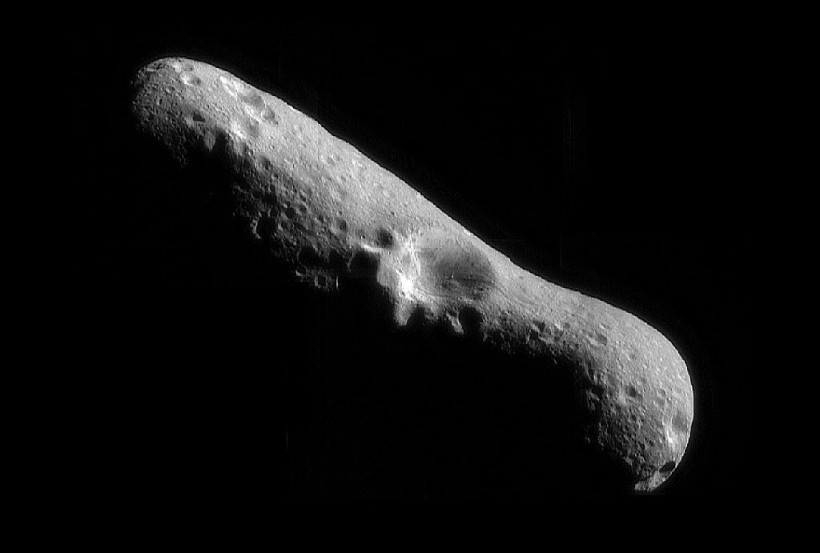A team of researchers from the California Academy of Sciences recently reported soot forming wildfires filled the sky and blocked the Sun shortly after an asteroid hit the Earth.
A Mail Online report said that the same asteroid that wiped out the dinosaurs and nearly all living creatures 66 million years back ignited two years of darkness on this planet, as revealed in a new study.
Specifically, 7.5 miles in width, the asteroid was traveling at 27,000 miles per hour when it crashed into the now-called Gulf of Mexico, leaving the Chicxulub crater.
The effect from the asteroid ultimately resulted in the extinction of 75 percent of all life on this planet, and scientists have long been investigating the post-effects of such impacts.
ALSO READ: NASA Now Accepting Applications for Aspiring Astronauts

A mosaic image of asteroid Eros at its north pole, taken by the robotic NEAR Shoemaker space probe on February 14, 2000, immediately after the spacecraft's insertion into orbit.
Earth in Darkness
In new research, the American team found the main extinction trigger may have been "clouds of ash and soot particles" that spread through the atmosphere, a similar California News Times report specified.
They explained the same clouds would have carried on for up to two years, putting huge parts of this planet in darkness and making it difficult for anything to grow or survive.
Life in the site surrounding the effect would have been destroyed instantaneously, although substantially more damage in the years that followed the collision.
Such damage includes flooding, tidal waves, and massive environmental change, which includes emitting particles into the atmosphere, eventually spreading worldwide.
Caused by Sulfuric Acid and Pulverized Rock
While this planet was covered in darkness, the study authors said photosynthesis, which plants are using to grow, would have been unsuccessful.
This would have resulted in a collapse of the ecosystem, and even following the return of sunlight, the decline in photosynthesis would have continued for several decades, explained the team in a Live Science report.
Such atmospheric darkness was caused by sulfuric acid and pulverized rock from the crash, forming as clouds in the sky, cooling temperatures all over the world, and generating acid rains that resulted in wildfires beginning, The World News reported.
As initially proposed in the 1980s, this nuclear winter scenario played a main part in the mass extinction, study author Peter Roopnarine explained.
300 Species Chosen for the Study
Despite being theorized for over 40 years, it has only been in the last ten years that models have been developed to find out how much darkness affected life.
Roopnarine explained, the common thinking now is that worldwide wildfires would have been suspended into the atmosphere."
The soot's concentration within the first few days to weeks of the fires would have been high enough to reduce the amount of incoming sunlight to a level that's low enough to stop photosynthesis.
The researchers studied the effect of this long-term dark period through the reconstruction of ecological communities that would have been present when the asteroid hit the Earth.
They chose 300 species known to have come from Hell Creek Formation, a fossil-rich expanse made of sandstone and shale in North Dakota, South Dakota, Montana, and Wyoming.
They developed replications to expose the communities to periods of darkness that lasted from 100 to 00 days to know which darkness interval would result in the level of extinction now known to have happened among vertebrate species.
As shown in the fossil records, roughly 73 percent of vertebrate species had gone extinct after the impact occurrence.
Live Science reported that the onset of that impact from the darkness would have taken place fast, reaching a maximum within just a couple of weeks. Findings of the research were presented at the American Geophysical Union's yearly meeting.
Related information about the asteroid that killed dinosaurs is shown on Your Discovery Science's YouTube video below:
RELATED ARTICLE: SpaceX Nailed Rocket Landing After Sending Massive Radio Satellite to Sirius XM
Check out more news and information on Space on Science Times.














